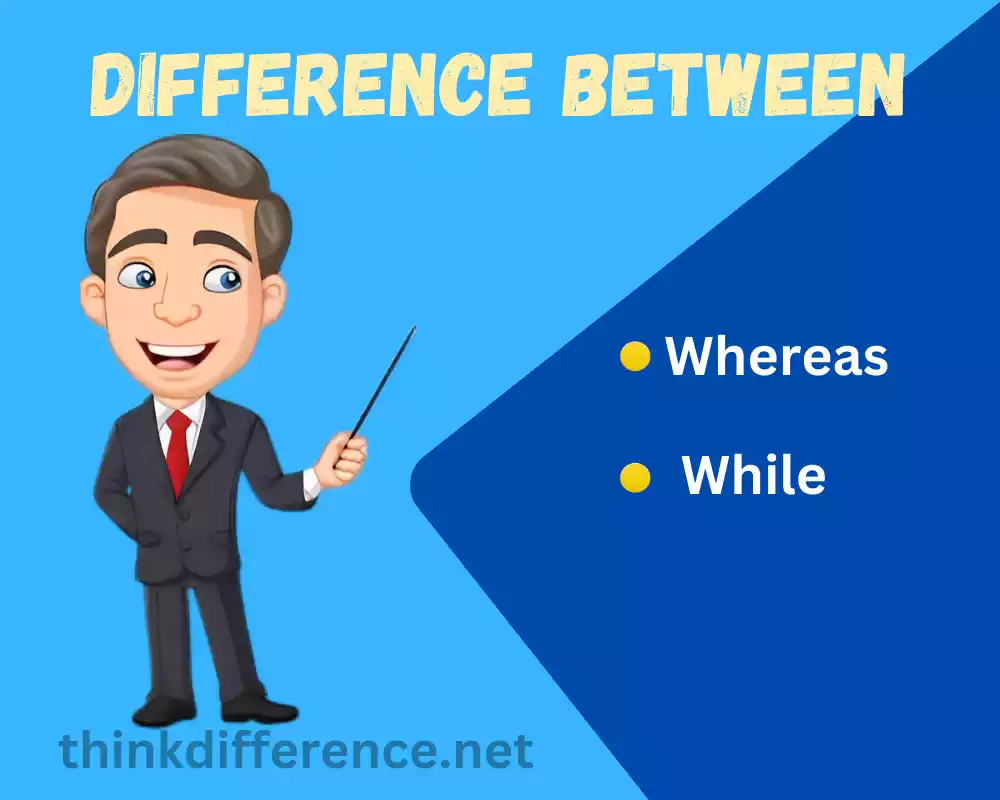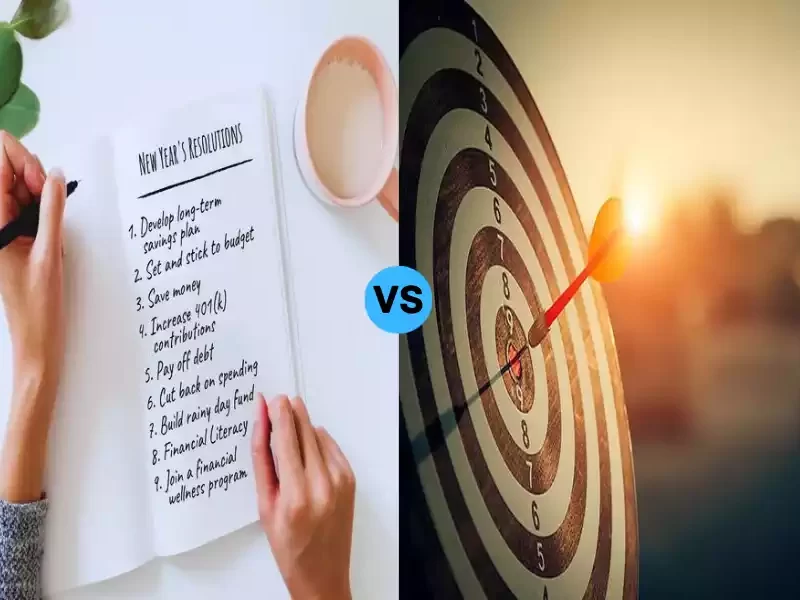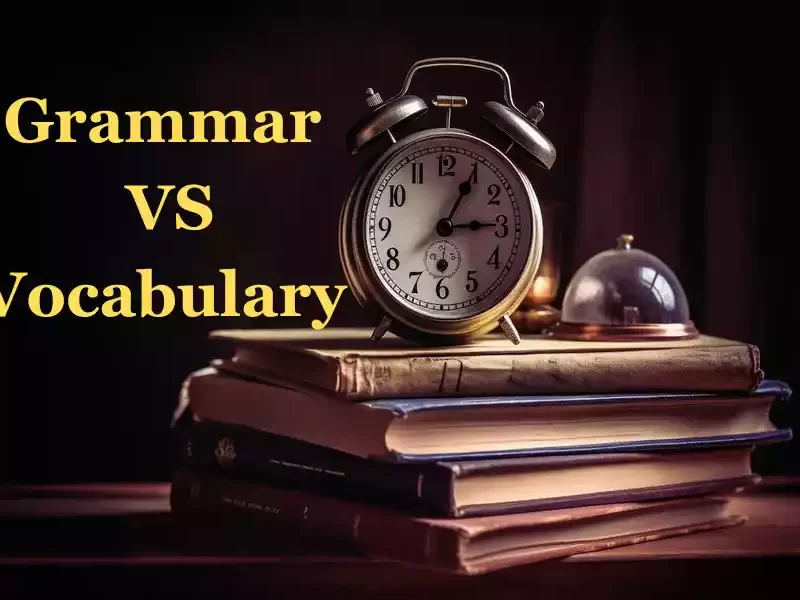Whereas and While are two commonly misunderstood words that often cause miscommunication. While they might initially look alike, understanding their distinctions and usage correctly are crucial components of effective communication. This article will go over these differences as well as provide examples demonstrating their meaning across a range of scenarios.
Definition of Whereas and While
Whereas: Whereas is used as a conjunction, or conjunction-like words to introduce clauses or statements which contrast or are opposed. This sentence typically occurs within formal legal documents like contracts or resolutions while providing contrastive evidence between two ideas or circumstances compared by using this clause to add context for main statements by providing different perspectives, conditions or background details.
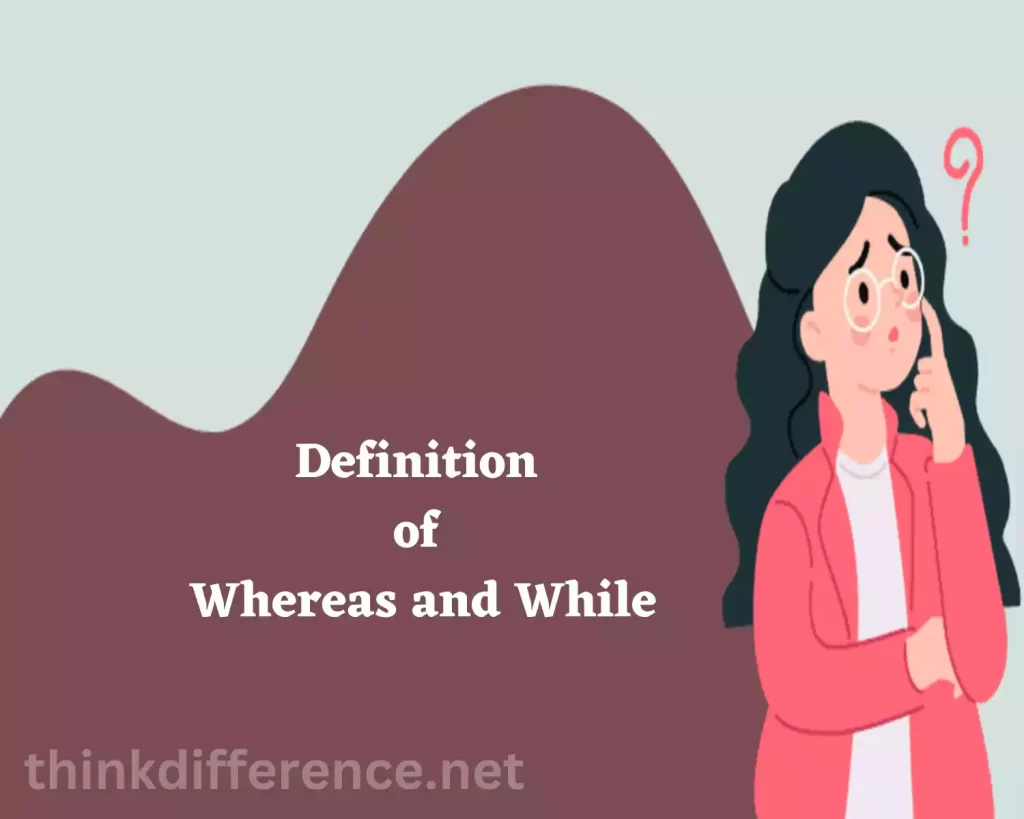
While: While is an adjectival phrase or conjunction-like word that marks an interval or simultaneity between events. The word can be applied both formally and casually to link two independent phrases or clauses together while suggesting they occur simultaneously, adding further information or providing contrast with what has come before it. “While” can also serve as a noun indicating its length.
Importance of understanding the difference between Whereas and While
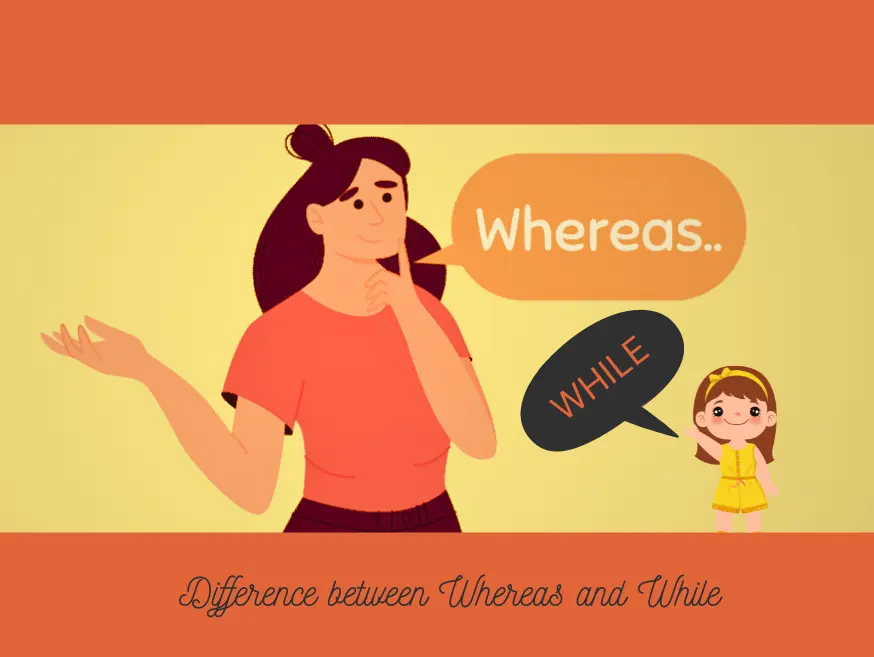
Understanding the distinctions between “wherever” (when) and “while”, is vitally important to effective communication and expression of ideas. Here’s why:
- Clarity of Contrast: To highlight contrast, “whereas” or its synonyms (e.g. compared/opposed/compared) should be introduced before any clause/statement which opposes or contrasts two ideas or scenarios; on the contrary “while” indicates relationships or timeframe between events/actions. By selecting appropriate terms you’ll ensure your intended contrast/relationship between two events or actions can be communicated clearly without confusion arising between events/actions and desired meaning conveyed accurately and concisely conveyed – ideal when used correctly
- Contextual Appropriateness: “Whereas” should only be used in formal settings such as contracts, resolutions or official documents where formality and precision is essential; while “while”, which offers more versatility across formal or informal contexts can also be utilized; with careful knowledge of proper usage you can adapt your language appropriately for each term used in any setting.
- Grammatical Structure: “Whereas” and “while” are two grammatical constructions which help form sentences correctly and accurately convey meaning to readers. They link dependent clauses together by creating dependent clauses which present different viewpoints or conditions; “whereas” connects independent clauses while showing relationships or simultaneities among events or actions taking place simultaneously; knowing these constructions will assist you with writing sentences more successfully and accurately communicating your intended message.
- Professional and Legal Writing: When writing professionally or legally – such as when drafting agreements, contracts, or official documents – it’s crucial that “whereas” be used correctly as it’s an essential word used within these fields and misusing this lexical element can cause serious legal implications – misusing “whereas” will add clarity and precision to your language while misuse can create confusion that has legal ramifications.
- Expressional Nuances: “While” and “whereas” both contribute to the expressive nuance of English Language. Understanding their differences allows greater flexibility when selecting words to express meaning more precisely; you will communicate better, leading to richer conversations that more efficiently express thoughts.
Understanding the differences among “whereas”, “while”, and “when” will allow you to select the appropriate term depending on the intended contrast or temporal relationship. Doing this ensures clarity while adhering to grammar structures correctly in accordance with context requirements for better communication skills.
Meaning and Usage
Whereas:
“While” is often employed to introduce statements or clauses which contrast or oppose one another and emphasize comparison between concepts or situations. When used formally or legally – such as contracts, resolutions or official documents – “whereas” often establishes its own independent clause that provides background or perspective information relevant to what follows afterward; giving language greater formality and precision while emphasizing differences or contrasts.
Example:
“Whereas the first proposal received unanimous support, the second proposal faced strong opposition.”
While:
While is used to show the temporal relationship or relation between events or actions. It connects independent clauses or phrases by suggesting they’re taking place simultaneously or can introduce subordinate phrases that provide extra information or contrast the main clause; and can even introduce subordinated clauses with more detailed or pertinent details than what was initially provided by main clause. Its usage spans both formal and casual settings to indicate coexistence among different activities.
Example:
“While I was studying, my friend was watching a movie.”
“While” can be used both formally and legally to emphasize differences or make comparisons while at the same time signifying temporal relations or coexistence of actions or events. As it’s an inclusive word that can be employed both casually as well as professionally, “While” makes an excellent way of conveying distinction between events or actions that occur over time. It has many uses that span legal proceedings as well as informal encounters.
Grammatical Function
Whereas:
Whereas is an interjection that connects two clauses or phrases which oppose or contrast each other; it introduces an alternate viewpoint or condition and introduces dependent clauses which expand on it further; its presence creates contrast between ideas or situations presented by each clause and creates contrast among them.
Example: “She loves spicy food, whereas he prefers mild flavors.”
This example uses “whereas” to introduce a clause which contrasts spicy food and mild flavor preferences.
While:
“While” serves both as an independent clause linker and conjunction. It indicates a contrast or simultaneity between events or actions mentioned within them; while implies they occur simultaneously.
Example: “I went for a run while my friend stayed home.”
“While” connects two independent clauses and indicates that both actions, going for a run and staying home, occurred simultaneously.
As both “whereas” (which juxtaposes with the main clause) and “while”, which introduces dependent clauses, serve distinct purposes, each “whereas” introduces a clause which contrasts with the main one and “while” adds information or serves as contrast with it.
Knowledge of grammar’s connection words – “whereas”, “while”, and “as” – allows one to construct sentences which are both grammatically-correct as well as conveying intended messages through efficient use of these connecting words.
Examples of Whereas and While
Whereas:
- “She prefers spicy dishes while her partner prefers mild flavors.
- This statement distinguishes between preferences for spicy food and milder tastes.
- The first proposal was accepted while the second was not.
- Here, the word “whereas” serves to make a clear contrast between accepting one proposal and rejecting another proposal.
- Some prefer rainy conditions while others favor sunny ones.
- This example illustrates a stark difference in attitudes regarding rainy and sunny weather conditions.
While:
- “She prefers spicy foods while he likes mild flavors.
- ” This phrase highlights two people with opposing food preferences – one who favors spicy flavors while another prefers mild ones.
- I ran while he stayed behind.
- “Whilst” here refers to when someone decides to run while their friend remains home.
- Some individuals prefer rainy conditions while others favor sunny skies.
This example showcases how diverse weather preferences coexist peacefully – some people tend to favor rainier conditions while others appreciate sunny weather more.
These examples show how “whereas” can be used to introduce comparisons or contrasts, while “while” shows simultaneous or opposing actions, preferences or situations.
Comparison table of Whereas and While
This table summarizes the main distinctions among “whereas”, “while”:
| Criteria | Whereas | While |
|---|---|---|
| The word “meaning” is used to describe the meaning of the phrase | Introduces a contrast, opposition or comparison | This indicates a relationship that is either temporal or concurrent |
| Grammatical Function | Conjunction or words that are similar to conjunctions | Conjunction or words that are similar to conjunctions |
| Clause Connection | Compare or oppose clauses/phrases and connect them | Connect independent clauses/phrases |
| Context | Commonly used to describe formal or legal situations | Use in informal or general contexts |
| Use | Compare or contrast – emphasizes the difference | Coexistence or temporal relation is indicated by the coexistence indicator |
| You can also see our Example of a Good Way to Start | “She likes spicy food while he prefers mild flavors.” | “I ran while my friend stayed at home.” |
Tips for Using Whereas and While Effectively
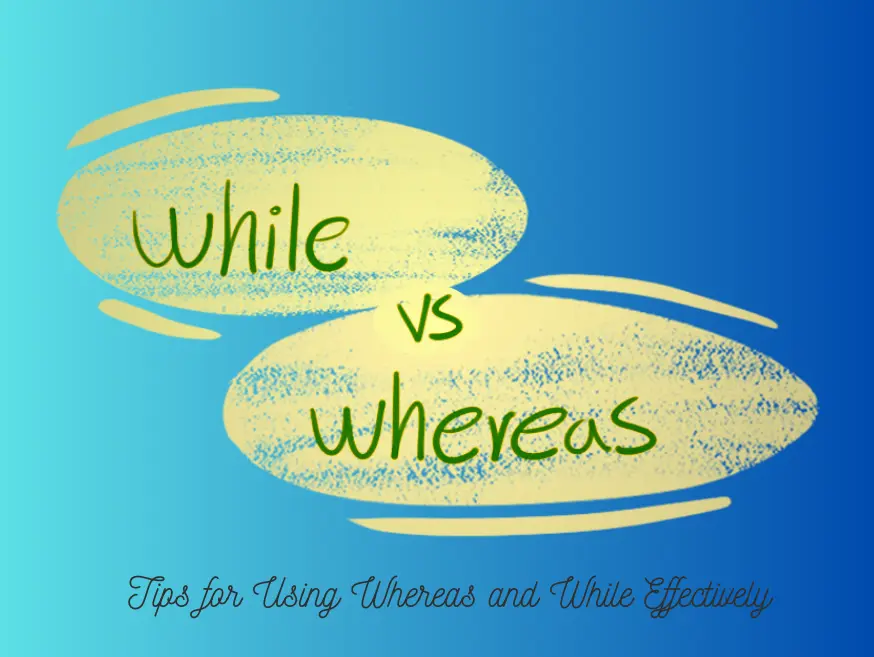
Tips for Using “Whereas” and “While” Effectively:
- Understand the meanings and functions:
- Familiarize yourself with the definitions and purposes of both “whereas” and “while.” Understand how they introduce contrasting information or establish comparisons in a sentence.
- Determine the appropriate context:
- Consider the context in which you are writing or speaking. “Whereas” is commonly used in formal or legal documents, while “while” is more versatile and can be used in both formal and informal contexts.
- Use “whereas” for formal and structured writing:
- Employ “whereas” in formal writing, such as legal documents, resolutions, or official statements. It adds formality and establishes a clear contrast or background context.
- Use “while” for everyday situations and comparisons:
- Use “while” to introduce a contrast or comparison in various contexts, including informal writing and speech. It is suitable for everyday situations and offers more flexibility in usage.
- Consider the grammatical role:
- Understand that “whereas” functions as a conjunction or introductory word, whereas “while” can function as a conjunction, preposition, or noun. Use the appropriate form based on the grammatical structure you intend to create.
- Pay attention to sentence structure:
- When using “whereas,” ensure that it is placed correctly at the beginning of a sentence or clause, followed by a comma. This helps establish the contrast or background information effectively.
- Vary your sentence structures:
- While “whereas” and “while” can be useful for introducing contrasts, try using alternative sentence structures or transition words to avoid repetitive or predictable writing.
- Read and analyze well-written texts:
- Study well-written texts in various genres to observe how “whereas” and “while” are used effectively. Pay attention to their placement, usage, and the impact they have on the overall meaning of the sentences.
- Proofread and revise:
- Always proofread your writing to ensure that you have used “whereas” and “while” correctly. Check for proper placement, appropriate context, and clear contrasts or comparisons.
- Practice and refine your usage:
- Practice using “whereas” and “while” in different sentences and contexts. Seek feedback from peers or experts to improve your understanding and usage of these words effectively.
Conclusion
Understanding the difference between “whereas” and “while” is crucial for effective communication. While “whereas” emphasizes contrast, “while” highlights simultaneity. By mastering their usage, you can elevate your writing and convey your ideas with clarity. So, next time you encounter these conjunctions, remember their unique roles in enhancing your language.

